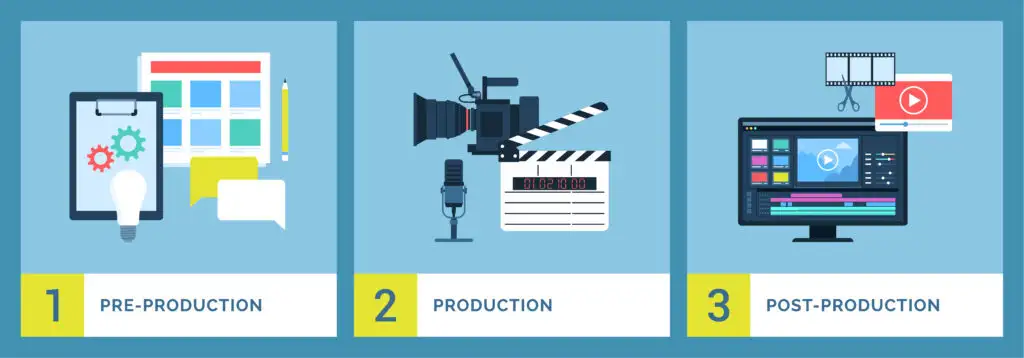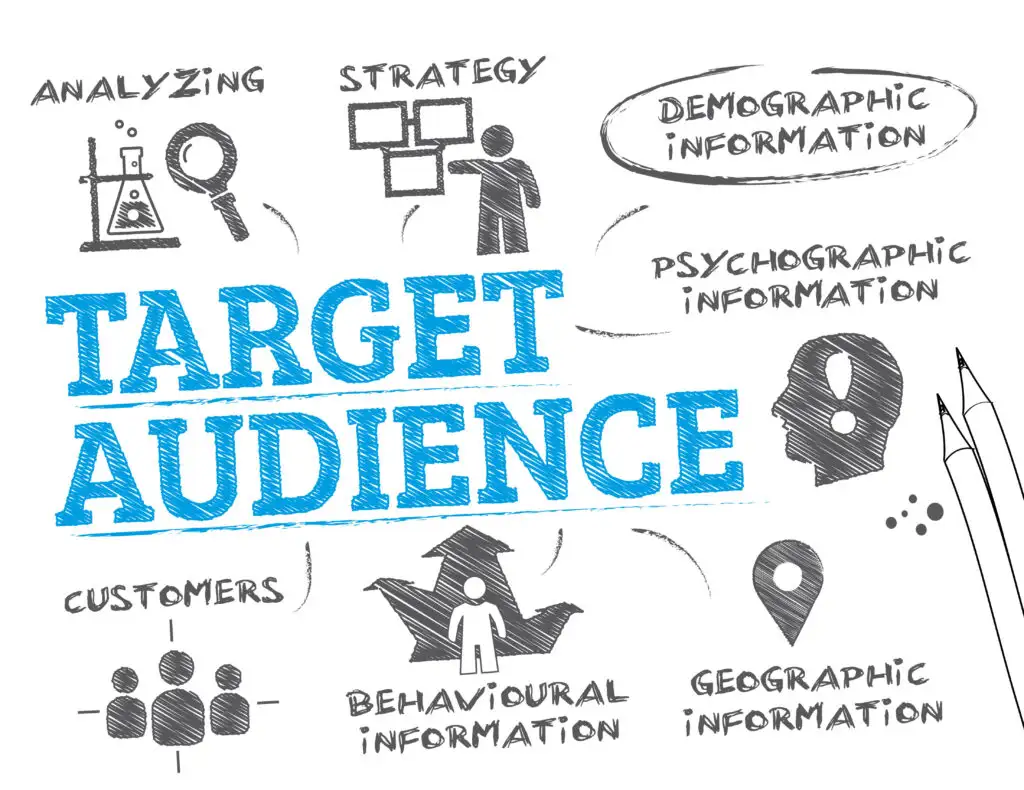The Making of a Corporate Video
Lights, camera, action! In today’s digital age, corporate videos have become an essential tool for businesses to promote their products and services. A well-crafted corporate video has the power to captivate and engage audiences, effectively conveying valuable information and leaving a lasting impression. But how do you go from a blank storyboard to a compelling finished product?
In this step-by-step guide, we will take you through the process of creating a captivating corporate video from start to finish. We’ll explore the importance of defining your target audience, developing a clear message, and crafting a storyboard that aligns with your brand voice. From there, we’ll delve into the technical aspects of video production, including choosing the right equipment, shooting techniques, and editing.

Whether you’re a seasoned filmmaker or a novice looking to create your first corporate video, this guide will provide you with the knowledge and tools you need to craft a captivating video that resonates with your audience and achieves your marketing goals.
So grab your camera and let’s get started on this creative journey!
Importance of Corporate Videos in Marketing
Corporate videos have become an integral part of marketing strategies for businesses of all sizes. They offer a unique opportunity to visually showcase your products or services, tell and establish your brand identity, and connect with your target audience on a deeper level.
One of the key advantages of corporate videos is their ability to convey complex information in a concise and engaging manner. Through a well-crafted video, you can effectively communicate your brand’s story, values, and unique selling propositions. This helps build trust and credibility among your audience, making them more likely to choose your products or services over competitors.
To illustrate, the media above is a 3-minute corporate video we produced for our client, UltiSat, which goes over the company’s mission, challenges, and the problem it’s trying to solve. The video is displayed on UltiSat’s website under “About Us.” Although the video is longer than a typical marketing video, it is a complete overview of the company which is helpful in educating someone trying to learn more about them.
Corporate videos can be shorter too which have a higher potential to go viral and reach a wider audience compared to other forms of content. With the rise of social media platforms and video-sharing websites, a captivating corporate video has the ability to generate buzz, increase brand visibility, and drive traffic to your website.
By incorporating corporate videos into your marketing strategy, you can enhance brand recognition, improve customer engagement, and ultimately boost your sales and revenue.
Pre-Production Phase:
1. Defining Objectives and Target Audience
Before diving into the creative process of crafting a corporate video, it’s crucial to define your objectives and identify your target audience. This will help you tailor your message and visual elements to resonate with the right people.
Start by asking yourself what you hope to achieve with your corporate video. Are you looking to increase brand awareness, drive website traffic, or educate your audience about a specific product or service? Clearly defining your objectives will guide the entire production process and ensure that your video aligns with your overarching marketing goals.
Once you have a clear understanding of your objectives, it’s time to identify your target audience. Who are the people you want to reach with your video? Consider their demographics, interests, and pain points. This will help you create content that speaks directly to their needs and desires, increasing the likelihood of engagement and conversion.
Remember, the more specific you can be in defining your target audience, the better you can tailor your message and visual elements to resonate with them. This will make your corporate video more compelling and effective in achieving your marketing objectives.
2. Scriptwriting and Storyboarding
Now that you have a clear understanding of your objectives and target audience, it’s time to start crafting the script for your corporate video. A well-written script is the backbone of any successful video production, guiding the flow of information and ensuring a cohesive and engaging narrative.
1. Outline Key Points of Your Video Message. Begin by outlining the key points you want to convey in your video. These could include your brand story, product features, customer testimonials, or any other information that aligns with your objectives and resonates with your target audience. Organize these points into a logical and compelling structure that flows smoothly from beginning to end.
2. Write Your Script. Once you have your outline, start writing the script. Keep in mind that the average attention span of online viewers is short, so it’s important to keep your script concise and focused. Use clear and simple language, avoiding jargon or complex terminology that might confuse or alienate your audience.
3. Incorporate Visual Elements. As you write, think about the visual elements that will accompany each section of the script. Visual storytelling is a powerful tool in corporate videos, so consider how you can incorporate engaging visuals, such as animations, product demonstrations, or customer testimonials, to enhance the impact of your message.
4. Create Storyboard. After finalizing your script, it’s time to create a storyboard. A storyboard is a visual representation of each scene in your video, illustrating the sequence of shots, camera angles, and any other visual elements. This serves as a blueprint for your production team and ensures that everyone is on the same page when it comes to capturing your vision.
At TriVision, our video production process begins with an idea to storyboarding, production, post-production and amplification. Our team works closely with our clients to create powerful corporate videos from concept to completion, whether the client already has a script or we come up with one together.
3. Planning the Shoot and Assembling the Team
With your script and storyboard in hand, it’s time to start planning the logistics of your shoot. This includes determining the location, scheduling the shoot days, and assembling your production team.
1. Select Location. When choosing a location, consider how it aligns with your brand identity and message. If you’re showcasing a product, you might want to film in a relevant setting that highlights its features and benefits. If you’re sharing customer testimonials, consider filming in a familiar and comfortable environment for your subjects. The location should enhance the overall impact of your video and help create a connection with your audience.
2. Plan Shoot Days. Next, schedule the shoot days, taking into account any necessary permits or permissions that may be required. Create a detailed shot list based on your storyboard, outlining the specific shots, camera angles, and movements required for each scene. This will help keep your shoot organized and ensure that you capture all the necessary footage.
3. Assign Team. Finally, assemble your production team. Depending on the scale of your video, this may include a director, producer, cinematographer, sound engineer, and other crew members. Each member of the team plays a crucial role in bringing your vision to life, so choose professionals who are experienced, reliable, and share your passion for creating a captivating corporate video.
Production Phase:
Filming Techniques and Equipment
Now that you’re on set, it’s time to bring your storyboard to life. The production phase is where the magic happens, and it’s important to pay attention to the technical aspects of filming to ensure a visually stunning and professional-looking video.
1. Prepare Equipment. Start by setting up your equipment. Depending on your budget and the complexity of your video, this may include cameras, lighting equipment, microphones, and other accessories. Choose equipment that suits your needs and allows you to achieve the desired visual and audio quality.
2. Plan Shot List. When it comes to filming techniques, there are a few key principles to keep in mind. First, consider the composition of your shots. Frame your subjects in a visually pleasing way, using the rule of thirds, leading lines, and other composition techniques to create a sense of balance and visual interest.
3. Pay Attention to Lighting. Proper lighting can make a huge difference in the overall look and feel of your video. Whether you’re shooting indoors or outdoors, make sure to use appropriate lighting techniques to enhance the mood and highlight the important elements of your scene.
4. Consider Camera Techniques. Lastly, consider the camera movements and angles that will best convey your message. Experiment with different shots, such as close-ups, wide shots, and tracking shots, to add visual variety and engage your audience. Don’t be afraid to get creative and try new techniques that align with your brand and story.
Post-Production Phase:
1. Editing and Adding Visual Effects
After capturing all the necessary footage, it’s time to move into the post-production phase. This is where you’ll bring all the elements together, polish your video, and add any necessary visual effects or animations.
1. Add Footage to Video Editing Software. Start by transferring your footage to a computer and organizing it in a video editing software. This will allow you to easily access and manipulate the clips as you start the editing process.
2. Review and Edit Footage. Begin by reviewing your footage and selecting the best takes for each scene. Trim any unnecessary footage and arrange the clips in the order specified by your storyboard and script. Pay attention to the pacing of your video, ensuring that it flows smoothly and keeps your audience engaged.
3. Add Visual Effects. Next, add any necessary visual effects or animations to enhance the impact of your message. This could include text overlays, transitions, or motion graphics that reinforce key points or add visual interest. Be mindful of not overdoing it, as too many effects can distract from the main message of your video.
4. Fine-tune Sound. Finally, fine-tune the audio of your video. Ensure that the sound is clear and balanced, adjusting the volume levels and adding any necessary background music or sound effects that complement the visuals. Pay attention to the timing of the audio, syncing it with the visuals to create a seamless and immersive viewing experience.
2. Sound Design and Music Selection
In addition to visual elements, sound design and music play a crucial role in creating a captivating corporate video. They help set the mood, evoke emotions, and reinforce your brand identity.
1. Select Music Accordingly. When selecting background music, consider the tone and message of your video. Choose music that aligns with your brand and resonates with your target audience. Whether you opt for a catchy jingle or an instrumental track, make sure it enhances the overall impact of your video without overpowering the dialogue or visuals.
2. Consider Audio Quality. In terms of sound design, pay attention to the quality and clarity of the audio. Remove any background noise or unwanted distractions, ensuring that the dialogue and voice-over are crisp and easy to understand.
3. Add Special Sound Effects as Needed. Consider adding sound effects that enhance the visual elements of your video, such as footsteps, door slams, or ambient sounds that create a sense of immersion.
Remember, sound design and music selection are powerful tools in creating a memorable and impactful corporate video. They help create an emotional connection with your audience and reinforce the key messages you want to convey.
3. Distribution and Promotion of Corporate Videos
Once your corporate video is complete, it’s time to share it with the world. Distribution and promotion are key steps in maximizing the reach and impact of your video.
1. Upload Video. Start by uploading your video to popular video-sharing platforms, such as YouTube or Vimeo. Optimize your video’s title, description, and tags to increase its visibility in search results. Consider creating a compelling thumbnail that entices viewers to click and watch your video.
2. Promote Your Video. Next, promote your video through your existing marketing channels. Share it on your website, blog, and social media platforms, and encourage your audience to like, comment, and share. Consider reaching out to relevant influencers or industry publications to feature your video and expand its reach.
3. Consider a Live Event. In addition to online promotion, consider hosting a live screening or organizing an event to showcase your video to a targeted audience. This can help create a sense of exclusivity and generate buzz around your brand.
4. Track Video Performance. Remember to monitor the performance of your video through analytics tools. Track metrics such as views, engagement, and conversions to evaluate the success of your video and make any necessary adjustments to your marketing strategy.
The Impact of Well-Crafted Corporate Videos
It’s safe to say that well-crafted corporate video has the power to captivate and engage audiences, effectively conveying valuable information and leaving a lasting impression. By following the step-by-step guide outlined in this article, you can create a captivating corporate video that resonates with your target audience, achieves your marketing goals, and sets your brand apart from the competition.
From defining your objectives and target audience to developing a clear message and crafting a storyboard, the pre-production phase lays the foundation for a successful corporate video. With the right planning and team, you can bring your vision to life during the production phase, using filming techniques and equipment to create visually stunning scenes.
In the post-production phase, editing, adding visual effects, and sound design help polish your video and enhance its impact. Finally, through distribution and promotion, you can maximize the reach and engagement of your corporate video, ensuring that it reaches the right audience and generates the desired results.
So grab your camera, follow this step-by-step guide, and let your creativity shine as you craft a captivating corporate video that will leave a lasting impression on your audience.
If you need help with any part of the video production process, reach out to our team at TriVision Studios for a free consultation at [email protected]. To view some of our past work, visit our portfolio.
RELATED ARTICLES:
How to Choose the Right Type of Corporate Video Production for Your Business




















